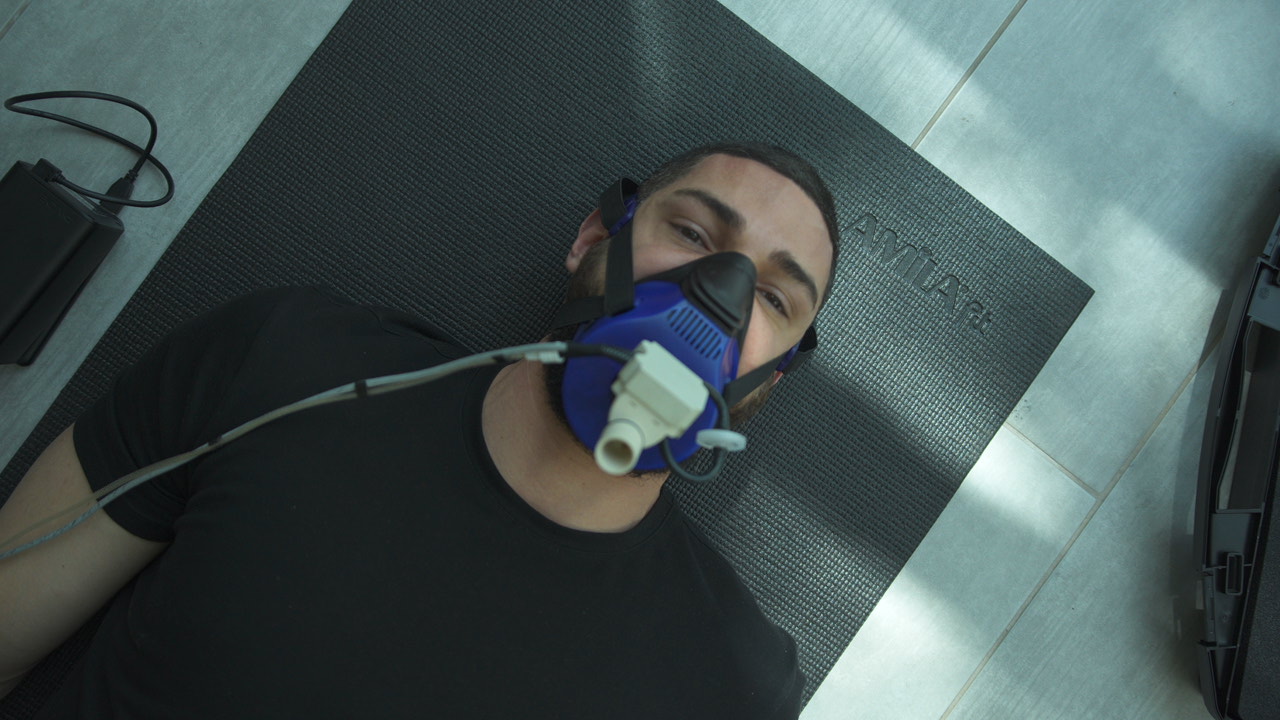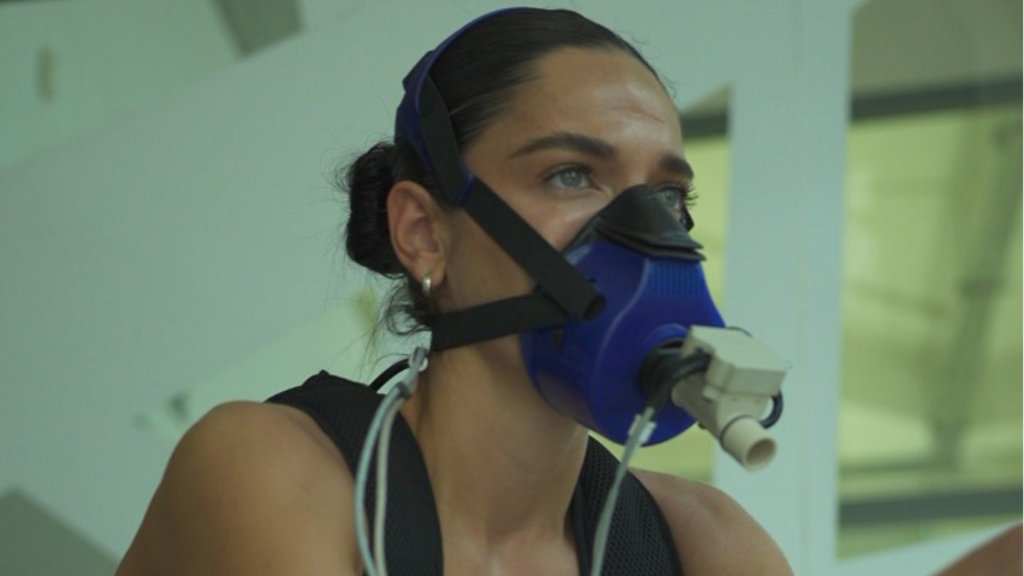Every breath your client takes contains valuable secrets. Metabolic testing – analyzing the oxygen consumed and carbon dioxide produced in respiration – can reveal a wealth of information about their fitness, health, and how to optimally coach them. In fact, this form of testing may be the hidden growth engine for both your clients’ results and your business’s success. By looking “under the hood” at someone’s metabolism, you can unlock new levels of personalization, effectiveness, and revenue that standard approaches simply can’t match.
What Is Metabolic Testing and Why It Matters
Metabolic testing typically refers to measuring resting metabolic rate (RMR) and exercise metabolism via breath analysis. Using a device (like a metabolic cart or portable analyzer), we capture the gases a person exhales to determine how many calories they burn at rest, how their body uses fuels (carbs vs fats), and – during exercise – their VO2 Max and other fitness markers. Essentially, metabolic testing turns your client’s breath into data: caloric needs, fat-burning efficiency, aerobic capacity, and more.
Why is this so powerful? Because metabolism varies hugely between individuals. Two people of the same age, weight, and gender might have RMRs that differ by a few hundred calories per day. Generic equations often fail to predict these differences. In fact, research shows that commonly used predictive formulas for RMR can be off by more than 10% in about one-third of individuals, even when using the “best” equation. For many people, that could be a discrepancy of 200–300 kcal per day – enough to make the difference between weight loss or plateau. Measuring someone’s actual metabolic rate takes the guesswork out of creating calorie plans and avoids the significant errors of one-size-fits-all estimates.
Moreover, metabolic testing assesses how the body is burning calories. By measuring the respiratory quotient (RQ) or respiratory exchange ratio (RER) – the ratio of CO₂ produced to O₂ consumed – we can tell what mix of fuels the body is using (fat vs carbohydrate). This is a glimpse into a person’s metabolic flexibility. A lower RQ (closer to 0.7) means a higher proportion of fat being burned, while a higher RQ (~0.9–1.0) indicates more carbohydrate burning. Why does this matter? Studies have found that individuals with a higher resting RQ (carb-preferring metabolism) are more prone to weight gain over time. In one classic study, people in the highest RQ percentile had 2.5 times greater risk of gaining significant weight compared to those with the lowest RQ. Identifying a client as a “high RQ” type might alert you that they need dietary adjustments (perhaps a higher protein/fat, lower carb approach) or training to improve fat oxidation. In short, metabolic testing shines light on whether a client’s body is primed to burn fat or prone to store it, allowing you to personalize strategies accordingly.
Another key component is VO2 Max and sub-maximal exercise data obtained via breath during an aerobic fitness test (often done alongside RMR in a comprehensive metabolic assessment). As detailed in the first blog post, VO2 Max is an indispensable measure of cardiorespiratory fitness and health risk. By conducting a VO2 Max test or a simpler sub-max test, you chart a client’s unique heart rate zones, ventilatory thresholds, and exercise economy. This informs precisely at what intensities they burn the most fat, where they cross into anaerobic metabolism, and how to structure their cardio workouts for maximal effect. For example, a metabolic test can identify a client’s “FatMax” zone – the intensity at which they oxidize fat at the highest rate. Training in this zone can be incredibly effective for weight loss and endurance building, especially for those who historically struggled to lose fat. These are insights impossible to glean from standard formulas or subjective feedback alone.
In sum, metabolic testing matters because it provides an objective, inside look at a client’s physiology. Instead of training and dieting in the dark, you and your client have concrete numbers: “Your resting metabolic rate is 1,450 kcal/day,” or “At 6 mph pace, you’re burning 60% fat / 40% carbs.” This data becomes the foundation for truly customized programs – and as we’ll discuss next, customization drives better results and business growth.
Personalized Nutrition: Ditch the Diet Guesswork
Perhaps the most immediate application of metabolic testing is in personalized nutrition coaching. Weight management is a huge client goal (and market) – and RMR testing gives you a significant advantage in this arena. Knowing a client’s exact resting metabolic rate enables you to set calorie targets with far greater accuracy than population-based equations. For instance, if a predictive equation estimated a client should eat 1,800 kcal/day to lose weight but their measured RMR is only 1,500, following the generic advice could leave them frustrated with slow progress. Conversely, some individuals have a higher metabolism than expected – if they diet on too low calories, they’ll be miserable and likely non-compliant. By measuring RMR, you can calibrate intake to a level that creates a proper deficit without overshooting (preventing excessive hunger or metabolic slowdown). It’s like having a metabolic GPS instead of relying on the map of averages.
Research supports the benefit of this precision. One study noted that using measured RMR to set calorie prescriptions led to more appropriate targets for weight loss, whereas predictive equations often misjudged needs. Over time, that precision can translate to more steady fat loss and less risk of plateaus. Furthermore, periodic metabolic testing can catch adaptive thermogenesis – the reduction in RMR that occurs with weight loss. Significant weight drops can cause the body to “downshift” its metabolism beyond what would be expected from the lost mass. The famous “Biggest Loser” study showed that participants’ RMR remained over 500 kcal/day lower than expected even 6 years after massive weight loss. If your client has been chronically dieting, you can use metabolic testing to detect if their metabolism is suppressed. This might prompt a strategic intervention (like a maintenance break, refeeding, or muscle-building phase) to rehabilitate their metabolic rate – rather than futilely pushing them to eat less and exercise more to no avail.
Beyond calories, metabolic testing informs macronutrient coaching. The RQ data, as mentioned, tells you about a client’s substrate utilization. If someone has a very high RQ at rest (indicating they’re burning mostly carbs and little fat), it could suggest lower metabolic flexibility or possibly high insulin levels. You might then tailor their diet to encourage fat oxidation – for example, reducing refined carbs, increasing healthy fats, or incorporating intermittent fasting (with their physician’s clearance) to train the body to use fat for fuel. On the other hand, a client with a low RQ (burning lots of fat at rest) might actually benefit from targeted carbs around workouts to improve performance, knowing their baseline fat burn is strong. Metabolic testing essentially lets you pinpoint whether a client is a “sugar burner” or “fat burner” and adjust their nutrition strategy accordingly. Over time, you can even track changes in RQ – a dropping RQ might indicate improved metabolic health and fat-burning capacity, which is a huge win for overall fitness.
Such tailored interventions can significantly improve outcomes. Imagine two clients both trying to lose 20 pounds. The one who underwent metabolic testing follows a plan where their calories are correctly set to their metabolism and their macros align with their body’s needs (e.g., higher protein and fat if they were a high-RQ individual). The other client follows a generic 1200 kcal diet from the internet. The first client feels energized, loses mostly fat (since their muscle mass is preserved by adequate protein and not under-eating), and steadily sheds pounds each week. The second client feels fatigued, possibly loses some muscle from undereating protein/calories, and hits a plateau – or gives up due to unsustainable restrictions. This scenario plays out time and again in real life. By being the coach who uses metabolic testing to craft sustainable, personalized nutrition, you set your clients up for success. Their success, in turn, becomes your success – in client retention, testimonials, and referrals.
Smarter Training: Optimize Workouts and Recovery
Just as metabolic testing guides nutrition, it also supercharges your training prescriptions. The VO2 Max and submaximal exercise data you gather can answer critical questions: At what heart rate does your client hit their aerobic threshold? How high is their VO2 Max compared to norms? Are they primarily burning fat or carbs at their typical exercise intensity? With this info, you can design workouts that are not just hard or random, but strategically effective.
For example, consider heart rate training zones. Many people use age-based formulas (220-age, etc.) to estimate zones, which can be wildly inaccurate. A metabolic exercise test pinpoints the client’s actual heart rates for zones like Zone 2 (moderate aerobic) and Zone 5 (peak effort). If a client’s metabolic test shows their Zone 2 ends at 140 bpm (where they start crossing a threshold and RER = 0.85), you’ll ensure their long runs or bike sessions stay around or just below 140 bpm to maximally develop aerobic capacity and fat utilization. Another client’s test might reveal they hyperventilate and spike heart rate early, meaning their aerobic base is weak – you might start them with lower-intensity conditioning to build efficiency. This precision keeps clients progressing and reduces trial-and-error training. It’s no wonder that endurance coaches and elite athletes have long used metabolic testing to fine-tune training blocks; now the same advantage can be given to everyday clients, keeping them improving and motivated.
Metabolic testing also helps in identifying and addressing weaknesses. Suppose a client’s VO2 Max test shows an excellent oxygen uptake but poor ventilatory efficiency (perhaps they’re not expelling CO₂ well, indicating a respiratory limitation), you could incorporate breath training or emphasize conditioning that challenges the respiratory system. Or, if their VO2 Max is decent but their lactate (ventilatory) threshold is low (they get winded at relatively low intensity), you know to focus on threshold training. This level of granular coaching simply isn’t possible without the data from breath analysis. By targeting the true limiter, clients see faster gains. They also feel heard and understood – instead of generic pep talks, you can say, “We found your aerobic threshold is at X. We’ll do most cardio at that level for a few weeks, and you should see your pace at that heart rate improve.” This instills confidence in the program, reinforcing adherence.
Recovery and overtraining signs can be gleaned as well. A metabolic test can reveal an elevated resting heart rate or RMR changes that might suggest undue stress. Some advanced protocols use RMR and RQ changes to detect when a client is in a stressed state (for instance, if RMR drops too much, possibly from metabolic adaptation or overtraining). You can then adjust their program (more rest days or more food) to prevent burnout. Thus, metabolic testing acts as an early warning system, ensuring your clients stay in an optimal zone for improvement rather than tipping into diminishing returns or injury risk.
All these factors – targeted zones, identified limiters, recovery monitoring – lead to better performance outcomes. Whether the goal is running a 5K, improving a CrossFit score, or just increasing functional stamina, a client whose training is informed by metabolic data will likely outperform and outlast one who is training blind. When clients achieve and exceed their goals under your guidance, they become your raving fans. They’re more likely to continue training with you for new goals, and to sing your praises to others. In effect, metabolic testing enhances the quality of your training service to a degree that boosts client lifetime value and organically markets your expertise.
Business Growth Through Differentiation and Premium Services
From a business perspective, metabolic testing offers a compelling value proposition that can catalyze growth. In a crowded fitness and wellness market, having a unique, science-based service helps you stand out. If you are one of the few facilities in your area offering VO2 Max and metabolic assessments, you attract clients who are seeking that level of sophistication – a segment willing to pay for quality and results. These might include serious recreational athletes, biohackers, or simply data-minded individuals who want the best for their health. By catering to this niche, you open up a new client pool (and possibly higher pricing tiers).
Metabolic testing also allows you to create premium packages. For example, you could offer a “Gold” program that includes monthly training plus quarterly metabolic tests to continually refine the client’s program. The perceived value (and actual value) of such a package is high – clients see that they’re getting ongoing assessments and adjustments, not just rote sessions. This justifies premium pricing and increases revenue per client. Practices that have implemented PNOĒ metabolic testing, for instance, often develop comprehensive 12-week transformation packages including initial and final metabolic evaluations – this not only brings in more revenue up front, but it also locks in clients for a longer duration (improving retention) because the re-test at the end gives them a tangible “finish line” to look forward to.
Additionally, metabolic testing can generate growth via partnerships. Doctors, dietitians, and physical therapists may not have access to metabolic analyzers in their offices but see the benefit for their patients. By positioning your facility as “the metabolic testing expert,” you can receive referrals from these professionals. For instance, an endocrinologist might send a patient to you for an RMR test to help determine a proper nutrition plan for weight management. A sports medicine physician might refer post-cardiac rehab patients to undergo VO2 Max testing with you to stratify their fitness improvements safely. These kinds of cross-referrals can be a powerful growth engine, expanding your reach into medical and corporate wellness spheres. It elevates your brand from “gym” to “health and performance center.”
Let’s not forget the marketing content angle: metabolic test results and success stories make for great content. You can share anonymized transformations like, “Client A’s metabolism was 1300 kcal and primarily carb-burning; with training and nutrition adjustments, we increased it to 1500 kcal and shifted their metabolism to burn 30% more fat at rest.” Such stories, backed by data, are compelling testimonials that attract savvy clients. Social media posts or blogs highlighting how “breath analysis revealed X, and we achieved Y” differentiate you from the endless posts of sweaty selfies and generic advice. You’re showing scientific credibility and results.
Finally, implementing metabolic testing can increase the professional development and enthusiasm of your own training staff. It’s intellectually stimulating for coaches to learn and apply exercise physiology in practice. That can improve staff retention and performance. A passionate, educated team that’s excited to use cutting-edge tools will deliver better client experiences, feeding back into business growth through customer satisfaction.
Getting Started: Integrating Metabolic Testing Into Your Practice
If you’re new to metabolic testing, the idea of expensive equipment or complicated protocols might seem daunting. But solutions like the PNOĒ system have made it practical and affordable to bring this capability in-house. A small investment in training and device acquisition can yield quick returns. Manufacturers often provide certification courses, so your staff can become proficient in testing protocols and data interpretation. Many devices are now designed to be user-friendly and portable, meaning you can even take them to corporate sites or athletic teams for on-site testing (another potential revenue stream).
Start by incorporating RMR testing for clients who have nutrition or weight-loss goals, and VO2 Max or submax testing for those with performance or endurance goals. Educate your clients on what these tests entail (e.g., breathing into a tube or mask for ~10 minutes for RMR, or performing a graded exercise for VO2) and how the results will directly inform their program. Clients are often excited by the prospect – it feels like getting a “fitness MRI,” uncovering personal insights. Emphasize the benefits: “This will allow us to pinpoint your calorie needs and take the guesswork out of your diet,” or “We’ll find out exactly how fit you are aerobically and where to improve, so we can tailor your training.” Position the testing as an integral part of a premium service for best results.
Operationally, you can set aside blocks of time each week for testing appointments. These can be billable sessions. Ensure to schedule a follow-up consult to go over results in detail with the client – this is where you cement the value by translating numbers into an actionable plan. The consult is also a great opportunity to reinforce the client’s commitment and upsell further coaching (“We’ve identified your targets; now, with weekly sessions we’ll execute this plan and check progress with another test in 8 weeks…”).
In short, treat metabolic testing not as a gimmick or one-off, but as part of your culture. Over time, as more of your clientele go through testing and rave about the insights (“I finally understand my metabolism!”), it will become a hallmark of your brand. New prospects will come specifically because they heard you offer this advanced level of care. And existing clients will appreciate that you’re continually investing in tools and knowledge to serve them better.
Conclusion: Breathing New Life Into Client Results and Your Business
Metabolic testing truly is a growth engine hiding in your clients’ breath. By tapping into the data inhaled and exhaled during rest and exercise, you unlock a deeper understanding of each individual. Clients experience more personalized nutrition, more effective training, and a clearer path to their goals. The outcomes speak for themselves in improved fitness, health markers, and body composition – achievements that drive client satisfaction to new highs.
For your business, the ripple effects are substantial. You differentiate yourself as a leader in science-driven coaching, capable of delivering results where generic programs falter. You create new revenue through testing services and potentially higher engagement packages. Perhaps most importantly, you foster stronger relationships with your clients – rooted in transparency and tailored guidance – which translate into loyalty and positive word-of-mouth. In an industry often fixated on short-term challenges and fads, you build a reputation for sustainable, intelligent, results-backed practice.
As we’ve seen, even top organizations like the American Heart Association recommend assessing metrics like VO2 Max for better health management. Elite coaches use metabolic data to fine-tune athletes’ regimens. It’s time these advantages become mainstream in everyday fitness and wellness settings. The technology is here; the demand is growing as consumers become more health-savvy and data-oriented.
Adopting metabolic testing might require a shift in how you operate – there’s a learning curve and an initial cost – but the return on investment is more than worth it. Your clients will effectively be getting concierge-level personalization. They’ll feel the difference when their plan truly fits their body, and they’ll reward you with commitment and referrals. Your practice will evolve from offering workouts and diets to delivering metabolic health and performance solutions.
In the end, remember that every client’s breath has a story to tell. It can reveal inefficiencies, potential, and progress. By listening to that story through metabolic testing, you empower your clients to rewrite their narratives – to lose weight they thought unlosable, to beat performance plateaus, to improve health metrics they were warned about. And in helping them do so, you’ll be writing your own success story as a forward-thinking, client-centered professional.
So take a deep breath, and take the leap into metabolic testing. Your clients’ results – and your business growth – may soon skyrocket, fueled by the information hidden in plain sight: their own breath.




